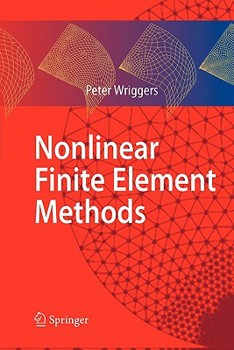Nonlinear Finite Element Methods
Select Format
Select Condition 
Book Overview
Finite element methods have become ever more important to engineers as tools for design and optimization, now even for solving non-linear technological problems. However, several aspects must be considered for finite-element simulations which are specific for non-linear problems: These problems require the knowledge and the understanding of theoretical foundations and their finite-element discretization as well as algorithms for solving the non-linear equations. This book provides the reader with the required knowledge covering the complete field of finite element analyses in solid mechanics. It is written for advanced students in engineering fields but serves also as an introduction into non-linear simulation for the practising engineer. This description may be from another edition of this product.
Format:Paperback
Language:English
ISBN:3642090028
ISBN13:9783642090028
Release Date:October 2010
Publisher:Springer
Length:560 Pages
Weight:1.74 lbs.
Dimensions:1.2" x 6.1" x 9.2"
Customer Reviews
5 customer ratings | 5 reviews
There are currently no reviews. Be the first to review this work.




















